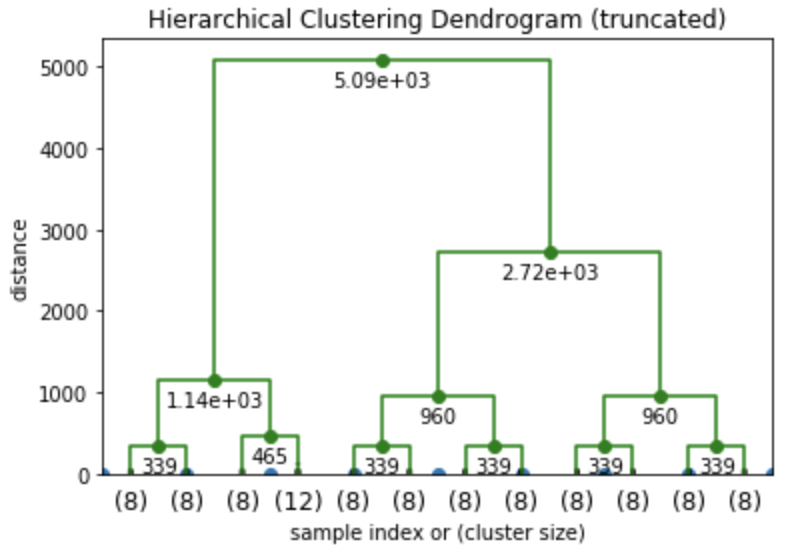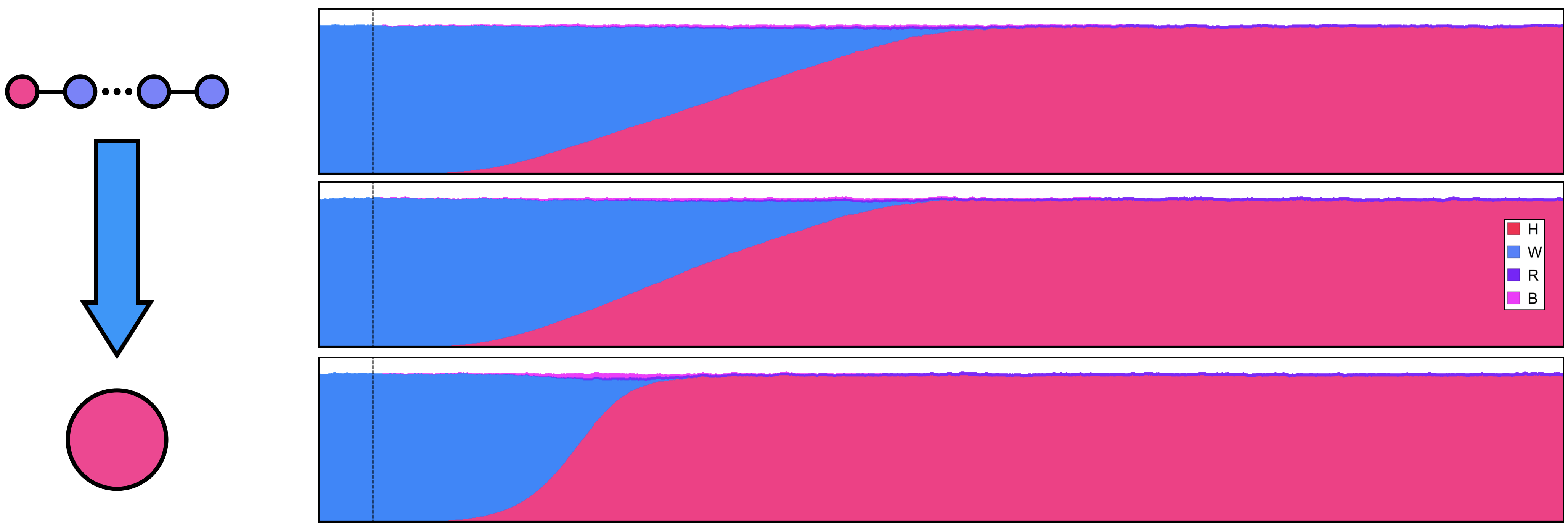Landscape Aggregation
The idea in these sets of experiments is to understand the differences in dynamics of the spread of gene drives in spatiotemporal landscapes, and how these dynamics are affected when we increase the aggregation (clustering) level of the breeding sites.
Steps & Methodology
The main goal is to determine a metric of information loss that we can use in the specific context of gene flows in mosquito populations.
Initial Exploratory Experiment
For this experiment, we are defining equally-sized mosquito populations to lie in a line, at a uniform distance from each other. With this basic spatial setting, we cluster hierarchically the populations: starting from having each node in it’s own “cluster”, and going up to all the points belonging to the same cluster group.


In doing so, we increase the population size to keep that variable constant across scenarios.
After generating different levels of aggregation, we run a gene drive construct. In this case, we are using MCR with different configurations $[H_{fitness},B_{fitness},F_{deposition}]$ to test various fixation speeds.
After running MGDrivE, we display de results of the simulation runs to look at the qualitative differences in the systems’ responses.

Next Steps
Provided that there are noticeable differences between the predictions on the initial exploratory experiment, we can start looking at the following tasks:
- Looking for an information metric that provides useful information
- Extending to grids
- Extending to irregular landscapes
Authors
Gillian Chu, Héctor M. Sánchez C.